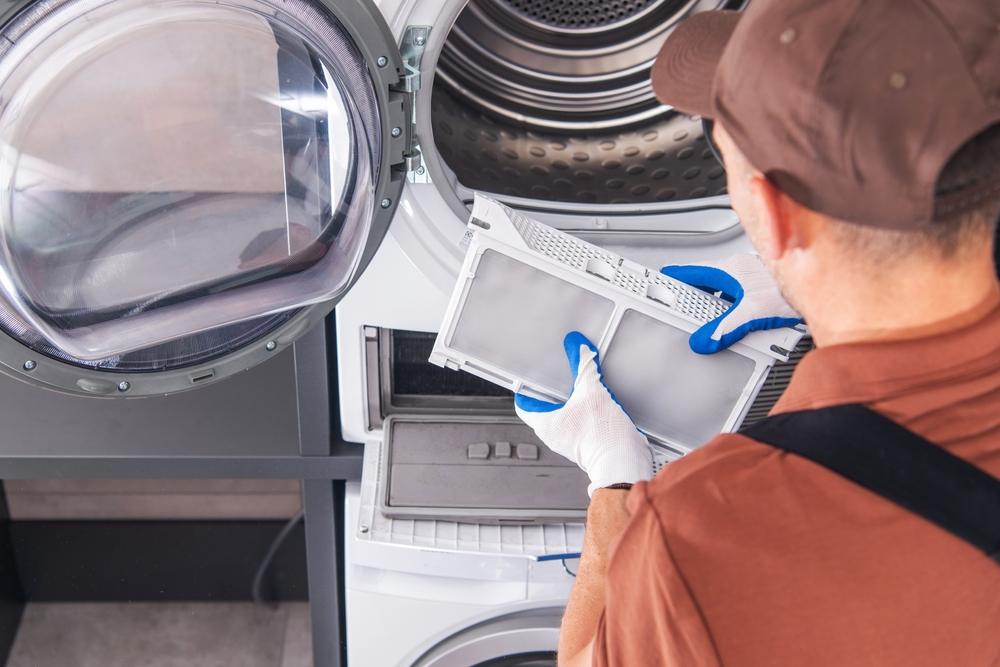
Are Washing Machine Repairs Worth It? How to Decide Between Fixing and Replacing
Homeowners in Milwaukee weigh this question every week. A washer starts shaking, leaves clothes wet, or throws an error code. The choice looks simple but carries real costs: parts, labor, time, and the risk of repeat breakdowns. With the right framework, the decision becomes clear, and it often saves a few hundred dollars.
This article shares a practical way to decide, rooted in years of appliance service across Milwaukee County. It highlights common failure points, real price ranges, and what changes when a machine is eight years old versus two. It also explains how local factors, like hard water on the East Side or basement installs in Bay View, affect Milwaukee washer repair outcomes.
A simple rule that works 80% of the time
If the repair is less than half the cost of a comparable new washer, and the unit is under eight years old, repairing usually makes sense. That threshold adjusts with brand, part availability, and how the machine has been used. Families who Milwaukee washing machine repair run five loads a week in Wauwatosa will make a different call than a single resident in Walker’s Point who washes twice a month.
What repair costs look like in Milwaukee
Service calls across Milwaukee typically range from 89 to 139 for diagnosis. Many shops apply that fee to the repair if the work proceeds. Common repair totals, including parts and labor, often fall into these ranges:
- Drain pump: 180 to 320
- Door lock/door latch: 150 to 260
- Water inlet valve: 160 to 280
- Belt or coupler: 130 to 240
- Pressure switch or hose: 120 to 220
Control boards, bearings, and tubs cost more. A control board often lands between 300 and 550. Bearing and tub jobs can run 400 to 800, sometimes more on premium models. At that point, replacement enters the conversation.

Age, brand, and load style matter
Front-load models generally offer better spin speeds and efficiency but can cost more to repair when bearings or door locks fail. Top-load models tend to be simpler to service, though newer high-efficiency tops have more sensors and software than older agitator units.
Brand and parts access influence cost and downtime. For example, mainstream manufacturers like Whirlpool, Maytag, and GE have consistent part availability around Milwaukee. Some European brands or niche models may require special orders with longer lead times. Older machines from the early 2000s can last a long time with simple fixes, but parts for certain models are disappearing, which shifts the math toward replacement.

Age is a key signal. Under five years old, repair almost always makes sense unless there is major tub or board damage. Between six and nine years, compare the quote to half the price of a new mid-range model. Over ten years, take a closer look at energy use, noise, and the likelihood of additional failures in the next year.
The 50%–8-year framework, with real scenarios
Consider a seven-year-old front-load washer in Riverwest with a failed drain pump. The estimate is 260, and a similar new unit costs 750 to 950. Repairing looks smart. The machine likely has years left, and pumps are straightforward.
Now consider a ten-year-old high-efficiency top-load in West Allis with bearing noise like a small airplane. The quote is 600. A new replacement ranges from 700 to 1,100. Bearings are time-intensive and may uncover further wear. Replacement often wins here, especially if water use has been high and the machine sees daily loads.
Edge cases exist. A three-year-old premium model in Shorewood with a failed control board may be worth a 500 repair because the replacement is 1,400. Meanwhile, a 12-year-old basic top-load with a 140 belt repair is a good fix, because that small spend buys another year or two at low cost.
Signs the washer still has strong bones
Experienced technicians look for build quality cues. A solid suspension that controls vibration, a clean interior free of sludge, hoses and valves that aren’t brittle, and a motor with steady ramp-up all indicate the machine deserves a second life. If the cabinet shows heavy rust, the tub spider looks corroded, or the shaft wobbles during spin, those are warning signs.
In Milwaukee basements, moisture and mineral content leave clues. East Side and Shorewood homes sometimes show scale on inlet screens and valves. South Side basements with poor ventilation show more corrosion. These details influence both the repair choice and any preventive steps after the fix.
What new washers really cost over time
Sticker price is just one line. A modern Energy Star front-loader can save 3,000 to 6,000 gallons of water per year versus an older unit, which matters if a family runs four or more loads weekly. Electric use drops too, especially with higher spin speeds that reduce dryer time. Homeowners running gas dryers see dryer fuel savings when the washer spins drier loads.
That said, modern machines have more electronic boards and sensors. Repairs can be pricier as the unit ages. The trade-off: lower utilities and better cleaning with delicate cycles versus potential board costs down the road.
A quick Milwaukee-specific decision checklist
- Confirm the age, model, and serial number. Look at usage: weekly loads and laundry habits change the math.
- Get a written diagnosis with part names and prices. Ask for the second-likeliest failure that could appear after the repair.
- Compare the quote to half the price of a similar new unit available locally today.
- Factor water hardness and basement humidity. Consider adding a pan, vibration pads, or a simple dehumidifier if moisture is high.
- Ask about part lead time. If laundry downtime hurts, short lead times or temporary loaner options matter.
Common symptoms and what they usually mean
A washer that will not drain often needs a pump, a cleared coin trap, or a simple hose clean-out. A unit that will not unlock may have a failed door lock or a control that needs a reset. Loud banging in spin usually points to suspension rods or shocks on top-load and front-load units respectively. A musty smell signals low-temperature washing, detergent residue, and biofilm in the door gasket or tub, which a cleaning cycle and gasket scrub often solve.
Error codes help narrow issues. For example, F21 or ND on many models relates to draining, while DL or dE points to the door lock. A quick photo of the code speeds diagnosis and keeps a service visit efficient.
How Unique Repair Services approaches Milwaukee washer repair
Technicians start with a clean diagnostic: visual inspection, error retrieval, and a functional test. They quote before any parts order, and they explain repair paths plainly, including alternate outcomes. If the repair is marginal on an older unit, they present both options with the 50%–8-year framework so the homeowner decides with full context.
On a recent call in Bay View, a front-load washer stopped mid-cycle. The pump was jammed with a small screw. The repair, including a cleaned trap and a fresh clamp, came to 195. The client avoided buying a new unit and learned a simple habit: check pockets and run a monthly hot wash with a cleaner. Another case in Wauwatosa involved a board that had intermittent power loss. After confirming stable voltages and ruling out the door switch, the board replacement fixed random shutdowns. The machine was six years old; the repair was 420, which beat the cost of a like-for-like replacement by half.
Small habits that extend washer life
Use the right detergent and measure it. Milwaukee’s moderate water hardness means many households can use less detergent than the cap suggests. Leave the door or lid open after washes to air out. Clean the drain filter every few months on front-load models. Level the machine so it does not walk during spin. Run a hot maintenance cycle monthly, especially in humid basements.
These steps prevent premature failures of pumps, pressure hoses, and door gaskets. They also keep the machine running quietly, which matters in duplexes and condos from the Lower East Side to Walker’s Point.
When replacement is the smarter choice
If the tub is cracked, the basket is out of round, or bearings roar even at low spin, replacement is often wiser, especially past year eight. If multiple parts are flagged at once, the combined cost can exceed the value of the unit. If parts are on backorder for weeks and laundry cannot wait, a new washer avoids repeated laundromat trips.
Think about space and hookups too. Some Milwaukee bungalows have tight stairwells and narrow doors. Swapping a deep front-loader for a compact 24-inch unit might make daily life easier, even if a repair could keep the old one limping along.
Clear next steps for homeowners
Start with a firm diagnosis before deciding. A short visit often changes assumptions, especially when the issue is a clogged trap or a bad hose rather than a major board. Ask for the part number and lead time. Compare the quote to a real, in-stock price at a local retailer. Include the cost of haul-away and install if replacing.
If the budget is tight, ask whether a repair can safely buy six to twelve months while planning for a future replacement. A good technician will state the risks plainly.
Book trusted Milwaukee washer repair
Unique Repair Services helps homeowners across Milwaukee, from Glendale and Whitefish Bay to Bay View, West Allis, and Wauwatosa. The team handles fast diagnostics, transparent quotes, and reliable repairs for most major brands. Same-week appointments are common, and many parts are stocked for quick turnarounds.
If a washer is giving trouble, request service today. A clear diagnosis will show whether a smart repair beats replacement right now. That one step protects the budget and keeps laundry day on schedule.

Unique Repair Services, Inc. provides washer repair in Milwaukee, WI. Our local technicians service all washer types and brands, fixing leaks, drainage problems, spin issues, and electrical faults. We help Milwaukee homeowners get their laundry back on track quickly using trusted repair methods and quality parts. From front-load to top-load models, we restore washers to reliable working condition. We focus on clear communication, dependable service, and fair pricing for every job in the Greater Milwaukee Area. Unique Repair Services, Inc.
Milwaukee,
WI,
USA
Phone: (847) 231-2812 Website: https://uniquerepair.com/service-areas/milwaukee-wi Social Media:
Facebook,
LinkedIn
Find Us on Map: Google Maps